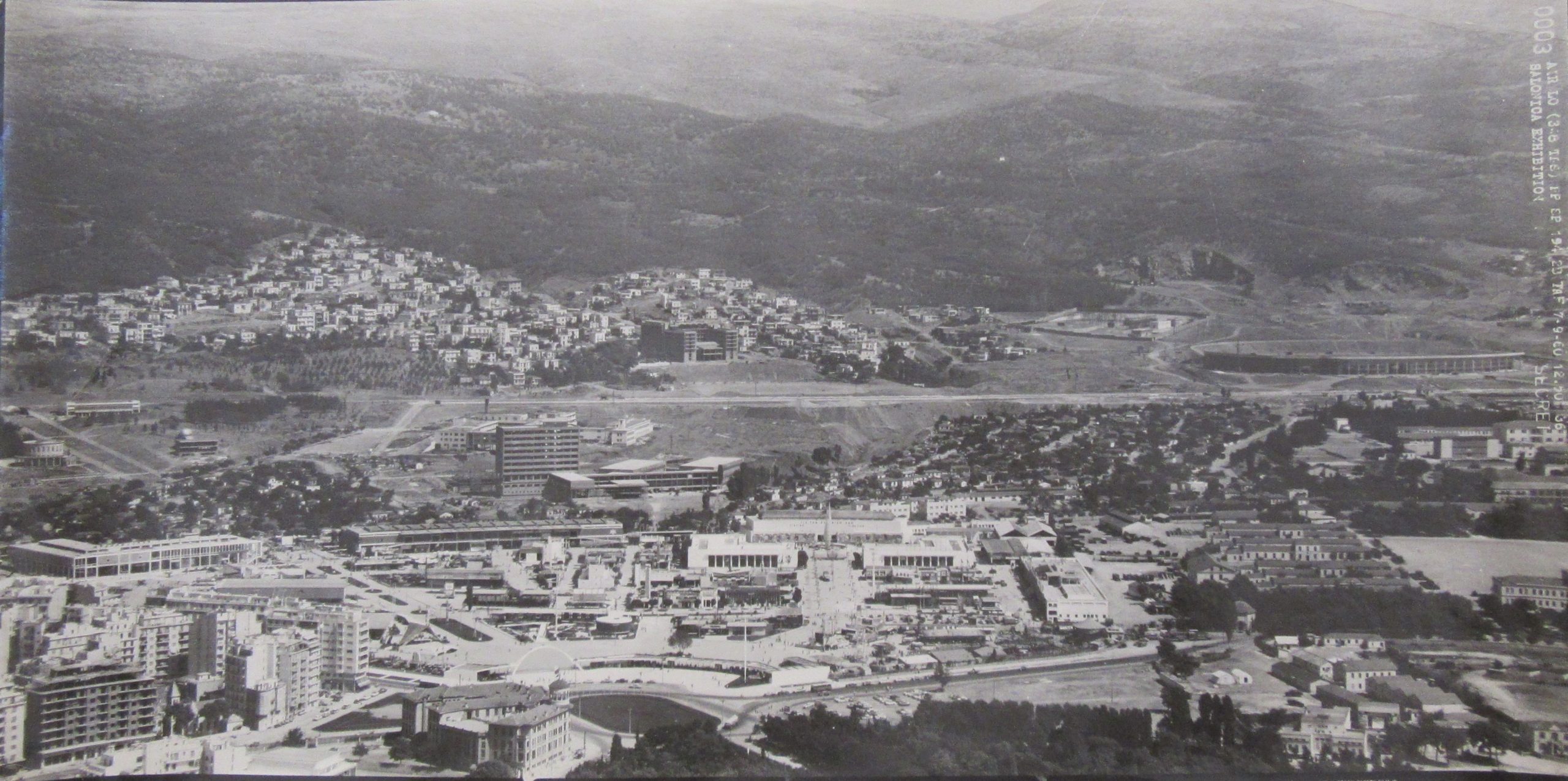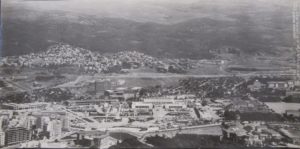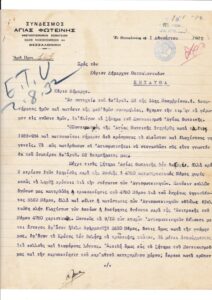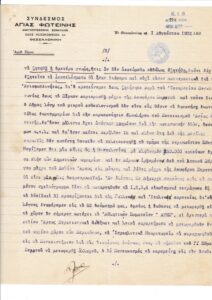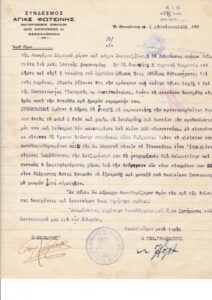The Agia Foteini quarter
Full Description
The Agia Foteini Quarter was one of the largest refugee settlements in Thessaloniki, but also one of the most likely to eventually fade into oblivion as it has left no trace on the urban landscape. The quarter sprawled over the area where the Thessaloniki International Fair as well as the city’s university campus and archaeological museum were later constructed. Before 1922, large parts of this area were occupied primarily by Muslim, but also Jewish cemeteries.
The area was first populated before 1917, when the Mufti of Thessaloniki let a small part of it to homeless people who started erecting shacks. This practice continued with the arrival of the refugees and, by 1924, an expansive settlement had emerged, comprising makeshift houses and shacks made of iron sheets, adobe, stone and marble from the nearby cemeteries. Despite the total lack of infrastructure, many refugees wanted to live near the city centre and, thus, the settlement grew, reaching a population of 13,000 to 15,000 in 1929. Stratou Avenue divided the settlement of Agia Foteini in two parts, Ano (Upper) and Kato (Lower), both of which were densely populated.
The land on which Agia Foteini was built had been incorporated into the city’s zoning plan, which was drawn up after the Great Fire of 1917 and included ambitious and groundbreaking schemes for the reconstruction and expansion of Thessaloniki. According to this plan, whose primary principles had been approved before the Asia Minor Catastrophe, most of the area of Agia Foteini would become a large park and the rest would accommodate the expansion of the city’s university campus.
The implementation of the plan, which would entail the removal of all Agia Foteini residents and the demolition of their dwellings, was delayed for years. Even though the Municipality of Thessaloniki backed the residents’ struggle against it, the plan was not amended. In 1930, the Parliament approved Law 4780, which stipulated housing rehabilitation and monetary compensation for a portion of the residents of Agia Foteini, but the process of demolition and rehousing dragged on. In the meantime, new residents settled in the area and Agia Foteini stopped being a settlement exclusively inhabited by refugees. At the end of the 1950s and the beginning of the 1960s the demolition process sped up and the empty land could finally accommodate the expanded facilities of the university and the Thessaloniki International Fair. Many of the residents were rehoused in Xirokrini, Toumba and mostly in Nea Krini. The last houses of the Agia Foteini settlement were torn down in 1970.
In a letter to the Mayor of Thessaloniki, Charisios Vamvakas, dated 1/8/1932, the Agia Foteini Resident Association protested against the implementation of both Law 4780 and its amendment, Law 5510. The Association claimed that if the law was to be implemented, 90% of the residents would become homeless, insisting that the Municipality could not possibly afford to transform the entire area of Agia Foteini into a park. In support of this argument, the Association wrote:
‘We believe that, in addition to the existing small municipal gardens, a park extending from the White Tower to Pedion Areos in length and stretching to Stratou Avenue in width would transform a city like Thessaloniki, with a population of 350,000 people, into a supremely European city’. The Association was demanding the amendment of the zoning plan, so that the settlement could remain in the area north of Stratou Avenue and all the way to Chortatzides, while the park would be limited solely to the area south of Stratou Avenue. This solution would ensure that very few families would need to be rehoused ‘since the majority of the owners of the houses south of Stratou Avenue that would have to be demolished are Jewish who will leave for Palestine upon receiving their compensation’. [1]
This is an aerial photograph taken in 1960. Depicted at the centre of the photograph are the facilities of the Thessaloniki International Fair. Right above and to the left, we can make out the Faculty of Engineering (University of Thessaloniki), with the multi-storey building already completed, while construction of the wings on the sides is ongoing. Behind that, the facilities of the AHEPA Hospital are visible. The Faculty of Engineering is flanked by large parts of the Agia Foteini settlement, since it had not yet been demolished in its entirety. We can also make out Chortatzidon Street (which linked Agia Foteini with Syntrivani), the only road leading to the AHEPA hospital at the time. On the top left part of the photograph and above Agiou Dimitriou Street (which was being built when the photograph was taken), we can make out the refugee neighbourhood of Saranta Ekklisies. The new Egnatia Street had not yet been built.
[1] After the arson attack on the Campbell Jewish Quarter in 1931 by refugees from Pontus and the nationalist organisation National Union of Greece, a rising number of Thessaloniki’s Jews migrated to Palestine. It is estimated that from 1932 until 1934, more than 2,000 Jews left Thessaloniki mainly for Haifa and Tel Aviv. Rena Molho, ‘Les Juifs en Grèce au XXe siècle’, Matériaux pour l’histoire de notre temps (71), p. 45, https://doi.org/10.3406/mat.2003.919. On the migration of Thessaloniki’s Jews after 1929, see also Konstantinos Sechidis and Ioannis Skourtis, ‘The migratory flow of Thessalonian Jews after 1929’, Hellenic Historic Society, Proceedings of the 32ndPanhellenic Historical Conference, 2011, pp. 243-253, http://histsociety.web.auth.gr/Praktika2011.
Bibliography
Eleni Ioannidou, ‘Agia Foteini: traces of a settlement in constant limbo’, in Eleni Ioannidou (ed.), The Transformation of Thessaloniki. Refugee settlement in the city (1920-1940), seminar proceedings, May 17, 2008, Historical Archive of Refugee Hellenism, ‘Friends of ASKI’ Society, Epikentro, Thessaloniki 2010, pp. 89-126.
